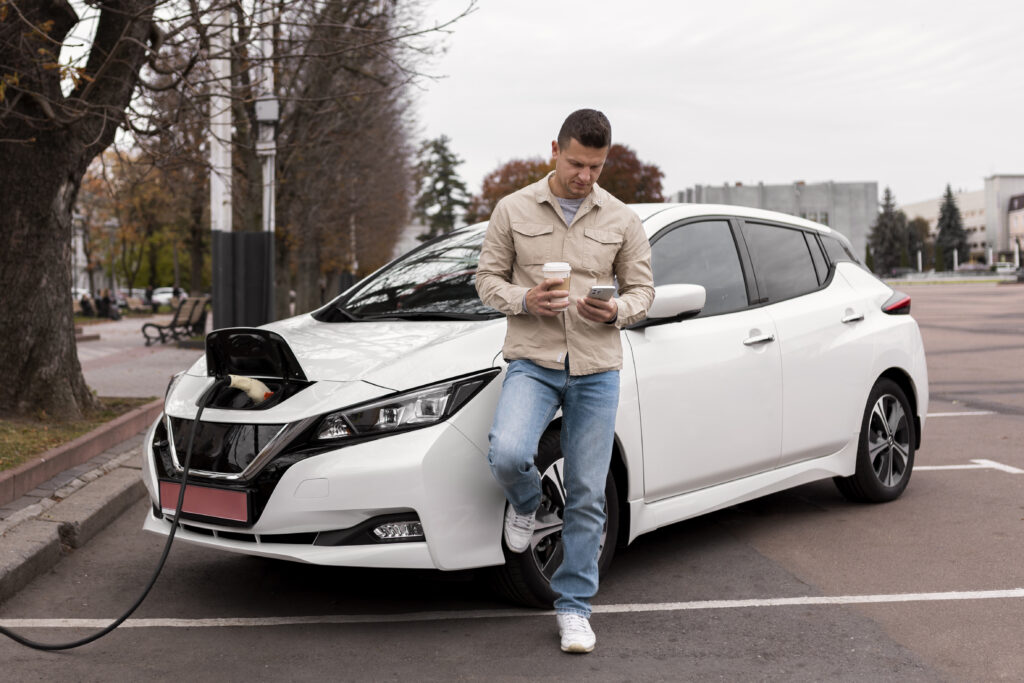The electric vehicle (EV) revolution is gaining momentum, with more and more drivers opting for eco-friendly and efficient transportation. But with a variety of options available, navigating the EV landscape can be overwhelming. This blog delves into the different types of electric vehicles, helping you understand their unique characteristics and find the perfect match for your needs.
1. Battery Electric Vehicles (BEVs): Pure Electric Power
BEVs, also known as All-Electric Vehicles (AEVs), are the true trailblazers of the EV world. They operate solely on electric power stored in a large rechargeable battery pack. This translates to zero tailpipe emissions, making them environmentally friendly choices. Popular BEVs include the Tesla Model 3, Nissan Leaf, and Chevrolet Bolt EV.
Pros
- Zero emissions: Contribute to cleaner air and combat climate change.
- Quiet operation: Enjoy a smooth and silent driving experience.
- Low maintenance: Electric motors require less servicing compared to gasoline engines.
- Government incentives: Many countries offer tax breaks and rebates for BEV purchases.
Cons
- Limited range: Compared to gasoline vehicles, BEVs have shorter driving ranges before needing a recharge.
- Charging infrastructure: Access to charging stations, especially fast-charging options, varies depending on location.
- Battery degradation: Battery capacity decreases over time, reducing the vehicle’s range.
- Higher upfront cost: BEVs tend to be more expensive than gasoline counterparts.
2. Plug-in Hybrid Electric Vehicles (PHEVs): Bridging the Gap
PHEVs offer a blend of electric and gasoline power. They have a larger battery pack than traditional hybrids, allowing them to operate solely on electric power for a limited range before the gasoline engine kicks in. This makes them ideal for daily commutes and short trips, with the gasoline engine providing backup for longer journeys. Popular PHEVs include the Toyota Prius Prime, Chrysler Pacifica Hybrid, and Ford Escape PHEV.
Pros
- Longer range: PHEVs combine the electric range of BEVs with the extended reach of gasoline vehicles.
- Reduced emissions: Utilize electric power for shorter trips, minimizing emissions.
- Charging flexibility: Can be recharged using an outlet or gas station, providing fuel source options.
- Lower upfront cost: Generally less expensive than BEVs.
Cons
- Higher complexity: PHEVs have more complex powertrains compared to traditional hybrids.
- Cargo space: Battery placement can sometimes reduce cargo capacity.
- Less fuel-efficient: In gasoline mode, PHEVs may not be as fuel-efficient as traditional hybrids.
3. Hybrid Electric Vehicles (HEVs): The Stepping Stone
HEVs combine an electric motor with a gasoline engine, seamlessly switching between them for optimal efficiency. The battery is smaller than in PHEVs and is charged primarily through regenerative braking, capturing energy lost during deceleration. HEVs are not plug-in and rely solely on gasoline for long-distance travel. Popular HEVs include the Toyota Camry Hybrid, Honda Accord Hybrid, and Hyundai Sonata Hybrid.
Pros
- Fuel efficiency: HEVs offer significantly improved fuel economy compared to gasoline-only vehicles.
- Reduced emissions: Lower emissions contribute to cleaner air and mitigate climate impact.
- Smooth driving experience: Seamless transition between electric and gasoline power.
- No charging required: Convenient for drivers who lack access to charging infrastructure.
Cons
- Not zero-emission: Still rely on gasoline for extended travel, producing emissions.
- Higher cost: HEVs tend to be more expensive than gasoline counterparts.
- Less powerful: Acceleration and performance may be compromised compared to gasoline vehicles.
4. Fuel Cell Electric Vehicles (FCEVs): Hydrogen Hopefuls
FCEVs are still in their early stages of development but offer a promising glimpse into the future of sustainable transportation. They convert hydrogen fuel into electricity through a chemical reaction, powering the electric motor and producing only water vapor as exhaust. Popular FCEVs include the Toyota Mirai and Hyundai Nexo.
Pros
- Zero tailpipe emissions: Cleanest form of electric transportation currently available.
- Rapid refueling: Hydrogen refueling can be quicker than charging a BEV battery.
- Longer range: FCEVs boast driving ranges comparable to gasoline vehicles.
Cons
- Limited infrastructure: Hydrogen fueling stations are scarce, hindering widespread adoption.
- High cost: FCEVs are currently the most expensive type of electric vehicle.
- Hydrogen production: The process of producing hydrogen fuel can be energy-intensive.
Choosing Your EV
The ideal EV for you depends on your driving habits, budget, and access to charging infrastructure. If you prioritize short, emission-free commutes and have access to charging.

